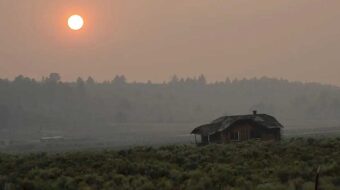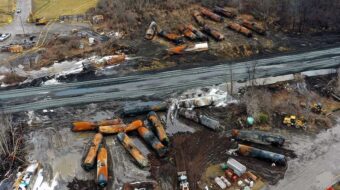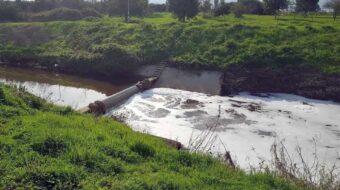
The Texas City disaster of April 16, 1947 was the deadliest industrial accident in U.S. history.
The Port of Texas City on Galveston Bay was a small industrial city with a population of about 18,000, teaming with chemical plants and oil refineries that provided steady, good-paying jobs for much of the town.
At 9:12 a.m., a fire broke out aboard the French freighter Grandcamp igniting approximately 2,300 tons of ammonium nitrate (a compound used to make dynamite) in the ship’s hold.
Texas City exploded. Wood-frame houses in the city were flattened, additional blasts were triggered at nearby chemical plants, and fires broke out across the city. The mushroom cloud from the blast rose 2,000 feet, and fragments of the Grandcamp were hurled thousands of feet into the air, landing on buildings and people. The ship’s anchor, weighing 1.5 tons, was flung two miles and embedded 10 feet into the ground at the Pan American refinery. The explosion was heard as far as 150 miles away.
Members of the Texas City Volunteer Fire Department were called out to douse the flames, but the ship was so hot that the water from their fire hoses was instantly vaporized. Some eyewitnesses said the scene was worse than anything they had seen in Europe during World War II.
Some of the deaths and damage in Texas City were due to the destruction and subsequent burning of several chemical plants (including Monsanto and Union Carbide), oil storage, and other facilities near the explosions.
Twenty-seven of the 28 members of Texas City’s volunteer fire department and three members of the Texas City Heights Volunteer Fire Department who were on the docks near the burning ship were killed. One firefighter, Fred Dowdy, who had not responded to the initial call, coordinated other firefighters arriving from communities up to 60 miles away. Eventually 200 firefighters arrived, from as far away as Los Angeles. Fires resulting from the cataclysmic events were still burning a week after the disaster, and the process of body recovery took nearly a month. All four fire engines of Texas City were twisted and burned hulks.
The nearby island city of Galveston, Texas, was covered with an oily fog that left deposits over every exposed outdoor surface.
The Grandcamp explosion was the most devastating industrial accident in U.S. history, with 600 people killed and more than 3,000 wounded.
One result of the Texas City disaster was widespread disaster response planning to help organize plant, local, and regional responses to emergencies. However, even in the most recent years, deadly explosions at fertilizer plants and oil refineries and massive oil spills show that safety oversight and enforcement remain seriously lagging.
Photo: AFF Local 1259

MOST POPULAR TODAY


Zionist organizations leading campaign to stop ceasefire resolutions in D.C. area

High Court essentially bans demonstrations, freedom of assembly in Deep South

Afghanistan’s socialist years: The promising future killed off by U.S. imperialism

Communist Karol Cariola elected president of Chile’s legislature






Comments